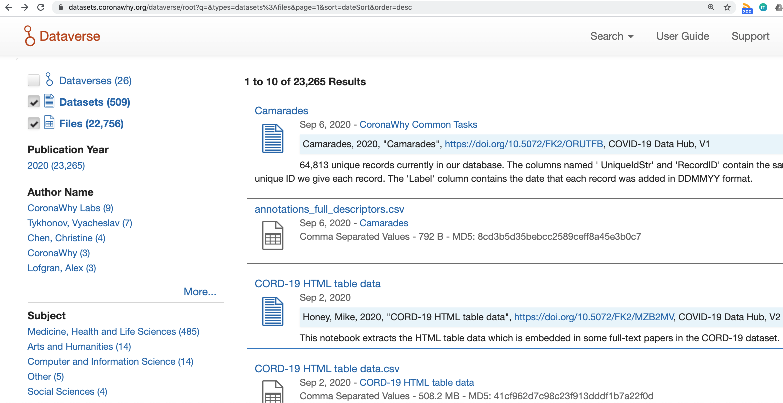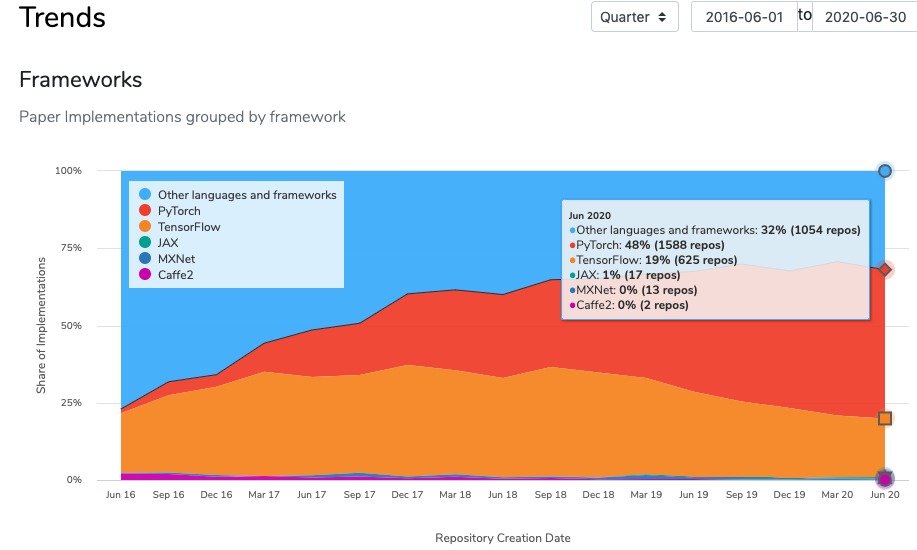Information of Assignments and Final Project for 2020 Fall UVa CS 4774 Machine Learning
Five assignments (50%)
- Post in collab
-
You will receive grading of each HWs within 10 day of each due time. A release email will send to you about the grading. (If you don’t receive such emails in time, please do email to to
instructors20fall-machinelearningdeep@collab.its.virginia.edu. - Please submit all extension requests, questions, and late assignments to
instructors20fall-machinelearningdeep@collab.its.virginia.edu.
| Index | Assignment | Out Date | In Date | About |
|---|---|---|---|---|
| HW1 | Out in Collab | W2 | W4 | Linear Regression and Optimization to Code |
| HW2 | TBD | W4 | W6 | Polynomial, Ridge, Model Selection to implement |
| HW3 | TBD | W6 | W9 | Deep NN on imaging to implement and to compete |
| HW4 | TBD | W9 | W11 | NBC and Deep on Text to implement and compete |
| HW5 | TBD | W11 | W13 | kNN to implement, SVM, and BoostingTrees to compare |
About in-class Quizzess (20%)
- Quizz dates will show on the schedule page
- Mostly quizzes will be on Mondays
- Each quizz includes contents we cover in the previous week
- We will use your top-10 quizzes to calculate the 20%.
| INDEX | Quiz |
|---|---|
| Q0-fake | URL |
| Q1 | URL |
| Q2 | URL |
| Q3 | URL |
| Q4 | URL |
| Q5 | URL |
| Q6 | URL |
| Q7 | URL |
| Q8 | URL |
| Q9 | URL |
| Q10 | URL |
| Q11 | URL |
| Q12 | URL |
| Q-makeup | URL |
About in-class flip recital sessions organized by Prof. Qi
- Starting from Week8, we shift from Synchorous lectures to flip models. During the flip mode, we use two weekly scheduled time sessions for the following plan.
| INDEX | Content for Flipped Recital Sessions |
|---|---|
| 1013 W8 | deep learning library |
| 1015 W8 | project plan checkup |
| 1020 W9 | HW1 + HW2 discussions |
| 1022 W9 | Quiz 1-5 discussions |
| 1027 W10 | HW3 discussions |
| 1029 W10 | Slides W9-10 discussions |
| 1103 W11 | Invited speaker RLGym |
| 1105 W11 | Invited speaker TextAttack |
| 1110 W12 | W11-12 Slides discussions |
| 1112 W12 | project midreport checkup |
| 1117 W13 | HW3, HW4 discussions |
| 1119 W13 | Quiz 6-11 discussions + W13 slides discussions |
| 1124 W14 | Final Project Presentations |
| 1126 W14 | Final Project Presentations |
About Final Project (30%)
- The purpose of our course project includes four folds
- (1) to learn by doing
- (2) to train students with 4C: Critical thinking, communication / collaboration / creativity
- (3) Regarding communication, we use a Why-What-How framework to structure all of our project deliverables.
- (4) to produce something with significance
-
Each team includes up to four students
- By Week4, we will use a google spreadsheet to coordinating team forming and project bidding.
- Please discuss with your fellow classmates, forming potential teams ASAP.
- We allow self-selected papers; libraries; but not close-domain datasets.
-
Please share questions and concerns to to
instructors20fall-machinelearningdeep@collab.its.virginia.edu. - You can select a project from three potential types:
- a. [Application-Type:] To produce one machine learning project on cutting-edge data applications with health or social impacts
- b. [Engineering-Type:] Survey and benchmark multiple pytorch library with a shared goal
- c. [Research-Type:] To Reproduce a cutting-edge machine learning paper, for instance from Top Venues’ most cited 2019 papers
- Here are the project presentations from 2019-Fall master-level machine learning that I offered.
- All were of “research-type”: https://github.com/qiyanjun/deep2reproduce
- Each team is required to submit multiple documents for their project
- 5 Points (Due in Collab at W7): A powerpoint file summarizing the proposed benchmarking idea / or the proposed application / or the to-reproduced-paper via a template
- 5 Points (Due in Collab at W10 ): A project proposal report summarizing the concrete project plan
- 5 Points (Due in Collab in the last week of the semester): A iPython Jupyter notebook / or A python code repo to present your team’s code, data visualization, and to obtain the results and analysis through step by step code/ cell run. Your team will go through and show the code-run at the final project presentation meeting to the instructors.
- 5 Points (in the last week of the semester): A formal presentation to the instructors
- 10 Points (Due in Collab in the last week of the semester): A formal report to the instructors , describing your projects: motivation, method, results and insights.
- For the iPython Jupyter notebook your team needs to make:
- A Jupyter iPython template is shared to help you structure the project code.
- Please read the following papers and then make your IPython Jupiter notebook: Ten Simple Rules for Reproducible Research in Jupyter Notebooks
- Here is a list of the potential ideas (chunking into three types: (1) replicating paper (2) good applications on COVID19 datasets, and (3) researching and benchmarking pytorch libraries.):
| INDEX | Title & Link | Conference, Year |
|---|---|---|
| COVID19 Data Hub for b. [Application-Type] | ||
| Hub1 | COVID19 in Kaggle https://www.kaggle.com/search?q=COVID | 2020 |
| Hub2 | COVID19 in NCBI https://www.ncbi.nlm.nih.gov/sars-cov-2/ | 2020 |
| Hub3 | COVID19 Data https://datasets.coronawhy.org | 2020 |
 |
2020 | |
| Pytorch Library Investigation for b. [Engineering-Type] | ||
| Hub | https://paperswithcode.com/methods | 2020 |
| 1 | to interpret deep NLP models: LIT | 2020 |
| 1 | to interpret deep general models: Captum | 2020 |
| 2 | to attack deep NLP models textAttack | 2020 |
| 3 | to benchmark adversarial attacks: Here | |
| 4 | Hyperparameter Optimization with PyTorch’s Ecosystem Tools Here | |
| 5 | Deep Probabilistic Programming: Pyro | |
| more |  |
2020 |
| Papers for c. [Research-Type] | ||
| 1 | Semi-Supervised StyleGAN for Disentanglement Learning | ICML2020 |
| 2 | Dispersed Exponential Family Mixture VAEs for Interpretable Text Generation | ICML2020 |
| 3 | Perceptual Generative Autoencoders | ICML2020 |
| 4 | Robust Graph Representation Learning via Neural Sparsification | ICML2020 |
| 5 | Doubly Stochastic Variational Inference for Neural Processes with Hierarchical Latent Variables | ICML2020 |
| 6 | Adaptive Adversarial Multi-task Representation Learning | ICML2020 |
| 7 | Fundamental Tradeoffs between Invariance and Sensitivity to Adversarial Perturbations | ICML2020 |
| 8 | Domain Aggregation Networks for Multi-Source Domain Adaptation | ICML2020 |
| 9 | Simple and Deep Graph Convolutional Networks | ICM2020 |
| 10 | Provable Representation Learning for Imitation Learning via Bi-level Optimization | ICML2020 |
| 11 | Robust And Interpretable Blind Image Denoising Via Bias-Free Convolutional Neural Networks | ICLR2020 |
| 12 | Causal Discovery with Reinforcement Learning | ICLR2020 |
| 13 | Improving Generalization in Meta Reinforcement Learning using Learned Objectives | ICLR2020 |
| 14 | ES-MAML: Simple Hessian-Free Meta Learning | ICLR2020 |
| 15 | Adversarially Robust Representations with Smooth Encoders | ICLR2020 |
| 16 | AugMix: A Simple Data Processing Method to Improve Robustness and Uncertainty | ICLR2020 |
| 17 | Inductive Matrix Completion Based on Graph Neural Networks | ICLR2020 |
| 18 | Understanding the Limitations of Variational Mutual Information Estimators | ICLR2020 |
| 19 | On Mutual Information Maximization for Representation Learning | ICLR2020 |
| 20 | Unsupervised Clustering using Pseudo-semi-supervised Learning | ICLR2020 |
| 21 | A Simple Framework for Contrastive Learning of Visual Representations | ICLR2020 |
| 22 | Noise-tolerant fair classification | NeurIPS2019 |
| 23 | SGD on Neural Networks Learns Functions of Increasing Complexity | NeurIPS2019 |
| 24 | On the Fairness of Disentangled Representations | NeurIPS2019 |
| 25 | Approximate Inference Turns Deep Networks into Gaussian Processes | NeurIPS2019 |
| 26 | “Time Matters in Regularizing Deep Networks: Weight Decay and Data Augmentation Affect Early Learning Dynamics Matter Little Near Convergence” | NeurIPS2019 |
| 27 | Self-Supervised Generalisation with Meta Auxiliary Learning | NeurIPS2019 |
| 28 | GNNExplainer: Generating Explanations for Graph Neural Networks | NeurIPS 2019 |
| 29 | DAG-GNN: DAG Structure Learning with Graph Neural Networks | ICML2019 |
| 30 | Tuning-free Plug-and-Play Proximal Algorithm for Inverse Imaging Problems | ICML2020 |